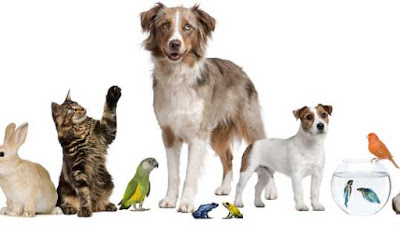 Cats Love with Purrs. Her purrs can mean a variety of things, from delight to expressions of concern. And kitty purrs range from soft and subtle to Mack-truck loud. When your cat purrs in your presence, you can be sure she’s expressing her love for you.
Cats Love with Purrs. Her purrs can mean a variety of things, from delight to expressions of concern. And kitty purrs range from soft and subtle to Mack-truck loud. When your cat purrs in your presence, you can be sure she’s expressing her love for you.
Cats Love with Rolling. When kitty throws himself on the ground at your feet, and rolls around, consider this a loving greeting and a solicitation for attention. Presenting the tummy in this fashion places the cat in a vulnerable posture. So cats generally reserve the rolling around for people they truly love.
Cats Love with Bunting. When a cat cheek-rubs you, head-bumps your face, or pushes against you, he leaves his scented signature. These behaviors, termed bunting, are expressions of affection cats display to other cats, dogs-and their most favorite people.
Cat Scratching

Cats Love with Scratching. Just as with the spraying, cat scratching leaves both scented and visual marks of ownership. Pay attention to where your cat scratches the most. The areas most important to kitty often are related to those places associated with the owner, like a favorite chair where you sit.
Cat Kneading
 Cats Love with Kneading. Kneading behaviors—front paw treading on soft surfaces—hearken back to kittenhood. Kitten paws knead against the mother cat’s breasts to induce milk to be released. Adult cats continue the behavior when they’re feeling most relaxed and content and loved, and that’s often when being petted on the owner’s lap. Kneading is an obvious expression of adoration.
Cats Love with Kneading. Kneading behaviors—front paw treading on soft surfaces—hearken back to kittenhood. Kitten paws knead against the mother cat’s breasts to induce milk to be released. Adult cats continue the behavior when they’re feeling most relaxed and content and loved, and that’s often when being petted on the owner’s lap. Kneading is an obvious expression of adoration.Cat Gifting

Cats Love with Gifting. Mighty hunter cats that catch everything from toys to bugs, mice or frogs, often share the bounty with those they love. Kitties who present you with this bounty deserve praise. They wouldn’t bring these special gifts if they didn’t love you.
Cats Love with Playing. Kittens play out of pure enjoyment, and many never outgrow playtime. Some cats may actually control the interaction of petting by moving just out of reach—so YOU must go to THEM. Their most favorite playmate typically is a trusted, beloved companion.
Cats Love with Sleeping. As sleep champs, felines typically sleep up to 16 hours a day. Because they are most vulnerable during sleep, the place your cat chooses to snooze must be a secure and trusted location. There is no greater loving compliment than a cat choosing your lap for a favorite sleep spot.
Cat Eyes
Cats Love with their Eyes. A kitty’s eyes are proportionately very large—if human’s eyes were the same proportion, our eyes would be eight inches across! As such, cat eyes are important assets for survival, yet extremely vulnerable. Cats that place their faces and wide open eyes near a human express great trust and love.
Cat Tails
Cats Love with their Tails. In a similar fashion, the “elevator butt” pose invites you to give special attention. Simply scratch her above the tail. Cats also signal their love when they approach you with the tail held straight up, and the end slightly tipped over. Kittens use this to greet their mother—and adult cats continue to treat their favorite humans like a beloved mom, with tails flagged high in respect.
Cat Meowing
Cats Love with Meowing. Cats rarely meow at other cats. Kitty uses these vocalizations specifically to interact with her people. Do you make a point to talk with those you dislike? Neither do cats! Even when kitty pesters you with lots of meows, she’s interacting with you out of love.
Cat Grooming
 Cats Love with Grooming. Cats spend an enormous amount of time self-grooming. They also groom each other, but shared grooming behaviors only happen between friendly cats. Kitties that groom their human by licking your skin or hair, or even nibbling or sucking on your clothing, indicates great affection. This spreads familiar scent and helps mark you as an important part of her family group.
Cats Love with Grooming. Cats spend an enormous amount of time self-grooming. They also groom each other, but shared grooming behaviors only happen between friendly cats. Kitties that groom their human by licking your skin or hair, or even nibbling or sucking on your clothing, indicates great affection. This spreads familiar scent and helps mark you as an important part of her family group.
Cats Love with Spraying. Say it ain’t so! But it’s true—if your cat has decided to baptize your bed or other belongings with urine, you should consider it a back-handed compliment. Cats use their own scent to calm themselves down. Kitties feeling upset over separation anxiety or other issues often target areas that smell the most like their beloved owners…such as the bed.
Cat Butts
Cats Love with their Butts. This is another “back handed compliment” that cats offer to only their most trusted, beloved people. Because kitties identify each other by scent, butt-sniffing is the equivalent to a very personal hand shake. When your cat jumps on your lap and presents her tail in your face, the invitation is obvious—not that you need to sniff.





















